Popular categories
Looking for a yarn?

100% Wool
from 1.90 £ /50g
Order DROPS Needles & Hooks
Clicking the ORDER button will redirect you to Wool Warehouse Direct Ltd website
King's Cable
Men's knitted pullover with cables in DROPS Alaska and DROPS Alpaca
Sizes: 12/14 years - S/M - L - XL - XXL
Finished measurements:
Chest: 100-110-118-124-134 cm
Hem: 88-96-106-116-124 cm
Materials: DROPS ALASKA from Garnstudio
600-750-800-900-1000 gr nr 49, light brown
and use:
DROPS ALPACA from Garnstudio
300-350-400-450-500 gr nr 607, light brown
DROPS 5 mm straight and double-pointed needles, and 6 mm straight needles, or sizes needed to obtain correct gauge.
-------------------------------------------------------
Alternative Yarn – See how to change yarns here
Yarn Groups A to F – Use the same pattern and change the yarn here
Yarn usage using an alternative yarn – Use our yarn converter here
-------------------------------------------------------

100% Wool
from 1.90 £ /50g
Order DROPS Needles & Hooks
Clicking the ORDER button will redirect you to Wool Warehouse Direct Ltd website
- English (UK/cm)
- Česky - not translated
- Dansk
- Deutsch
- Eesti keel
- English (US/in)
- Español
- Français
- Íslenska - not translated
- Italiano
- Magyar
- Nederlands
- Norsk
- Polski
- Português
- Suomi
- Svenska
- English (UK/cm), Bulgaria
- English (UK/cm), Croatia
- English (UK/cm), Greece
- English (UK/cm), Latvia
- English (UK/cm), Lithuania
- English (UK/cm), Romania
- English (UK/cm), Slovenia
- Česky, Slovakia - not translated
Pattern instructions
Rib: *K 3, P 3*, repeat from *-*.
Pattern: The pattern is seen from the right side. Pattern 1 (M.1) is the first 10 rows of the chart. The black squares in Pattern 1 are NOT sts – skip over these squares.
Pattern 2 (M.2) is the top 24 rows of the chart.
Front: Cast on 60-66-72-78-84 sts on smaller needles with 1 strand each Alaska + Alpaca and knit rib as follows (row 1 = right side):
Size 12/14 years: K 1 (edge st knit in garter st), *P 3, K 3*, repeat *-* a total of 2 times, Pattern 1 (= 34 sts), *K 3, P 3*, repeat *-* a total of 2 times, end with K 1 (edge st knit in garter st).
Size S/M: K 1 (edge st knit in garter st), *K 3, P 3*, repeat *-* a total of 2 times, K 3, Pattern 1 (= 34 sts), *K 3, P 3*, repeat *-* a total of 2 times, end with K 3 and K 1 (edge st knit in garter st).
Size L: K 1 (edge st knit in garter st), *P 3, K 3*, repeat *-* a total of 3 times, Pattern 1 (= 34 sts), *K 3, P 3*, repeat *-* a total of 3 times, end with K 1 (edge st knit in garter st).
Size XL: K 1 (edge st knit in garter st), *K 3, P 3 , repeat *-* a total of 3 times, K 3, Pattern 1 (= 34 sts), *K 3, P 3*, repeat *-* a total of 3 times, end with K 3 and K 1 (edge st knit in garter st).
Size XXL: K 1 (edge st knit in garter st), *P 3, K 3*, repeat *-* a total of 4 times, Pattern 1 (= 34 sts), *K 3, P 3*, repeat *-* a total of 4 times, end with K 1 (edge st knit in garter st).
When Pattern 1 is complete, (the piece measures approx. 6 cm) change to larger needles – there are now 14 sts incl in Pattern = 74-80-86-92-98 sts.
Continue as follows: K 1 (edge st knit in garter st), 12-15-18-21-24 sts stockinette st, Pattern 2 (= 48 sts) and 12-15-18-21-24 sts stockinette st, K 1 (edge st knit in garter st).
When the piece measures 12 cm inc 1 st at each side every 5-6-7-12-12 cm a total of 4-4-4-3-3 times = 82-88-94-98-104 sts.
When the piece measures 35-43-44-45-46 cm bind off for armhole at each side every other row: 3 sts 1 time, 2 sts 1-0-1-1-2 times and 1 st 2-1-2-4-4 times = (68) 80-80-80-82 sts.
When the piece measures 50-59-61-63-65 cm dec 14 sts evenly distributed over the center 48 sts. On the next row bind off the center 14-16-16-16-18 sts for the neck.
Then bind off at each neck edge every other row: 2 sts 1 time and 1 st 2 times = 16-21-21-21-21 sts remain on each shoulder.
Bind off when the piece measures 56-66-68-70-72 cm.
Back: Cast on 59-65-71-77-83 sts on smaller needles with 1 strand each Alaska + Alpaca and knit rib as follows:
Sizes 12/14 years + L + XXL: K 1 (edge st knit in garter st), *K 3, P 3*, repeat *-*, end with K 3, K 1 (edge st knit in garter st).
Sizes S/M + XL: K 1 (edge st knit in garter st), *P 3, K 3*, repeat *-*, end with P 3 and K 1 (edge st knit in garter st).
When the piece measures 6 cm – the same length as Front – change to larger needles and stockinette st. When the piece measures 12 cm inc at each side as on front = 67-73-79-83-89 sts.
Bind off for armhole as on front = 53-65-65-65-67 sts.
When the piece measures 54-64-66-68-70 cm bind off the center 19-21-21-21-23 sts for the neck. On the next row dec 1 st at each neck edge = 16-21-21-21-21 sts remain on each shoulder.
Bind off when the piece measures 56-66-68-70-72 cm.
Sleeve: Cast on 32-32-38-38-38 sts on smaller needles with 1 strand each Alaska + Alpaca and knit rib, keeping 1 edge st at each side in garter st. When the piece measures 6-8-8-8-8 cm change to larger needles and stockinette st.
When the piece measures 10-12-10-13-14 cm inc 1 st at each side every 3.5-3-3.5-3-2.5 cm a total of 10-12-11-12-14 times = 52-56-60-62-66 sts.
When sleeve measures 46-48-49-50-50 cm bind off for sleeve cap at each side every other row: 4 sts 1 time, 3 sts 1 time, 2 sts 1-1-2-2-2 times and 1 st 3-1-1-2-2 times, then bind off 2 sts at each side until the piece measures 54-54-58-59-61 cm, then bind off 3 sts at each side 1 time.
Bind off the remaining sts, the piece measures approx. 55-55-58-60-62 cm.
Assembly: Sew shoulder seams.
Collar with rolled edge: Pick up and knit approx. 60-78 sts (divisible by 6) around the neck on smaller double-pointed needles with 1 strand each Alaska + Alpaca; join and place a marker at the join. Knit rib for 12-12-14-14-14 cm and then bind off in rib.
Pick up and knit approx. 56-72 new sts in the 1st row of the rib (at neckline) on smaller double-pointed needles with 1 strand each Alaska + Alpaca; join and knit 3 rows stockinette st (= rolled edge). Bind off – for best results, make a yo every 8 sts at the same time as you bind off.
Sew in sleeves. Sew sleeve and side seams using edge sts as a seam allowance.
Diagram

|
= knit from right side, purl from wrong side |

|
= purl from right side, knit from wrong side. |

|
= do not knit these sts – skip over these squares |

|
= inc 1 st by att knit 2 sts in 1 st. |

|
= put 2 sts on cable needle in front of work, K 2, K 2 from cable needle. |

|
= put 2 sts on cable needle in back of work, K 2, K 2 from cable needle. |

|
= put 4 sts on cable needle in front of work, K 4, K 4 from cable needle. |

|
= put 4 sts on cable needle in back of work, K 4, K 4 from cable needle |

|
= put 2 sts on cable needle in back of work, K 4, K 2 from cable needle |

|
= put 4 sts on cable needle in front of work, K 2, K 4 from cable needle. |

|
= put 2 sts on cable needle in back of work, K 4, P 2 from cable needle. |

|
= put 4 sts on cable needle in front of work, P 2, K 4 from cable needle. |

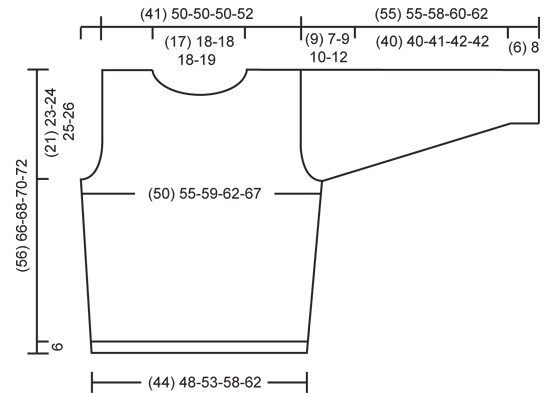
What can you do with our patterns? You can share DROPS patterns online, using the pattern original picture, materials, name and number. But you are NOT ALLOWED to reproduce the complete pattern digitally in any way. Yarn stores are welcome to use the DROPS pattern database to promote the sale of our assortment. You can print out our patterns, make as many copies as you’d like. The only thing we ask is that you don't make any changes / additions to the original printed document. And that the patterns according to the DROPS philosophy are given out to the consumers for free. Editorials that wish to publish our patterns in printed books or magazines can contact us for more information. The sale of garments based on DROPS patterns is permitted as long as they are sold as single items or per order. Further commercial use of the patterns is not permitted. It has to be clearly stated that the garment is made based on a design from DROPS DESIGN. The use of clothing labels of which DROPS DESIGN forms part is conditioned by the inclusion of the following text: “A DROPS DESIGN made by …..”. The use of DROPS photos for marketing purposes/sales is only permitted in connection with the use/sale of DROPS products. The photos may not be cut or edited and the logo should be clearly visible.
We reserve the right to withdraw the permission for use of our patterns at any time, notwithstanding the reason.
Each of our patterns has specific tutorial videos to help you.
These step-by-step tutorials might also help you:
Why is the knitting/crochet tension so important?
Knitting tension is what determines the final measurements of your work, and is usually measured per 10 x 10 cm. It is provided like so: number of stitches in width x number of rows in height - eg: 19 stitches x 26 rows = 10 x 10 cm.
The knitting tension is very individual; some people knit/crochet loosely while others work tightly. You adjust the knitting tension with the needle size, which is why the suggested needle size is only meant as a guide! You need to adjust this (up or down) to ensure that YOUR knitting tension matches the knitting tension provided in the pattern. If you work with a different knitting tension than provided you will have a different yarn consumption, and your work will have different measurements than what the pattern suggests.
The knitting tension also determines which yarns can replace each other. As long as you achieve the same knitting tension you can replace one yarn with another.
See DROPS lesson: How to measure your tension/gauge
See DROPS video: How to make a gauge tension swatch
How do I know how many balls of yarn I need?
The required amount of yarn is provided in grams, eg: 450 g. To calculate how many balls you’ll need you first need to know how many grams are in 1 ball (25g, 50g or 100g). This information is available if you click on the individual yarn quality on our pages. Divide the amount required with the amount of each ball. For example, if each ball is 50g (the most common amount), the calculation will be as follows: 450 / 50 = 9 balls.
Can I use a different yarn than what the pattern suggests?
The important thing when changing from one yarn to another is that the knitting/crochet tension remains the same. This is so that the measurements of the finished piece will be the same as on the sketch provided. It is easier to achieve the same knitting tension using yarns from the same yarn group. It is also possible to work with multiple strands of a thinner yarn to achieve the knitting tension of a thicker one. Please try our yarn converter. We recommend you to always work a test swatch.
Please NOTE: when changing yarn the garment might have a different look and feel to the garment in the photo, due to individual properties and qualities of each yarn.
See DROPS lesson: Can I use a different yarn than the one mentioned in the pattern?
What are the yarn groups?
All our yarns are categorised into yarn groups (from A to F) according to thickness and knitting tension – group A contains the thinnest yarns and group F the thickest. This makes it easier for you to find alternative yarns to our patterns, should you wish to switch yarn. All yarns within the same group have a similar knitting tension and can easily replace each other. However, different yarn qualities have different structures and properties which will give the finished work a unique look and feel.
How do I use the yarn calculator?
At the top of all our patterns you’ll find a link to our yarn calculator, which is a helpful tool should you wish to use a different yarn than suggested. By filling in the yarn quality you wish to replace, the amount (in your size) and number of strands, the calculator will present good alternative yarns with the same knitting tension. Additionally it will tell you how much you’ll require in the new qualities and whether you’ll need to work with multiple strands. Most skeins are 50g (some are 25g or 100g).
If the pattern is worked with multiple colours, every colour will have to be calculated separately. Similarly, if the pattern is worked with several strands of different yarns (for example 1 strand Alpaca and 1 strand Kid-Silk) you will have to find alternatives for each, individually.
Why do you show discontinued yarns in the patterns?
Since different yarns have different qualities and textures we have chosen to keep the original yarn in our patterns. However, you can easily find options among our available qualities by using our yarn calculator, or simply pick a yarn from the same yarn group.
It is possible that some retailers still have discontinued yarns in stock, or that someone has a few skeins at home that they would like to find patterns for.
The yarn calculator will provide both alternative yarn as well as required amount in the new quality.
What size should I knit?
If you think it's hard to decide what size to make, it can be a good idea to measure a garment you own already and like the size of. Then you can pick the size by comparing those measures with the ones available in the pattern's size chart.
You'll find the size chart at the bottom of the pattern.
See DROPS lesson: How to read size chart
Why do I get the wrong knitting tension with the suggested needle size?
The needle size provided in the pattern serves only as a guide, the important thing is to follow the knitting tension. And since knitting tension is very individual, you will have to adjust the needle size to ensure that YOUR tension is the same as in the pattern – maybe you’ll have to adjust 1, or even 2 needle sizes, up or down to achieve the correct tension. For this, we recommend that you work test swatches.
Should you work with a different knitting tension than the one provided, the measurements of the finished garment might deviate from the measurement sketch.
See DROPS lesson: How to measure your tension/gauge
See DROPS video: How to make a tension/gauge swatch
Why is the pattern worked top-down?
Working a garment top-down provides more flexibility and room for personal adjustment. For example it is easier to try the garment on while working, as well as making adjustments to length of yoke and shoulder caps.
The instructions are carefully explaining every step, in the correct order. Diagrams are adjusted to the knitting direction and are worked as usual.
How do I work according to a knitting diagram?
The diagram depicts all rows/rounds, and every stitch seen from the right side. It is read from bottom to top, from right to left. 1 square = 1 stitch.
When working back and forth, every other row is worked from the right side and every other row is worked from the wrong side. When working from the wrong side, the diagram will have to be worked reversed: from left to right, knit stitches are purled, purl stitches are knit etc.
When working in the round every round is worked from the right side and the diagram are worked from right to left on all rounds.
See DROPS lesson: How to read knitting diagrams
How do I work according to a crochet diagram?
The diagram depicts all rows/rounds, and every stitch seen from the right side. It is worked from bottom to top, from right to left.
When working back and forth every other row is worked from the right side: from right to left and every other row is worked from the wrong side: from left to right.
When working in the round, every row in the diagram are worked from the right side, from right to left.
When working a circular diagram you start in the middle and work your way outwards, counter clockwise, row by row.
The rows usually start with a given number of chain stitches (equivalent to the height of the following stitch), this will either be depicted in the diagram or explained in the pattern.
See DROPS lesson: How to read crochet diagrams
How do I work several diagrams simultaneously on the same row/round?
Instructions for working several diagrams after each other on the same row/round, will often be written like so: “work A.1, A.2, A.3 a total of 0-0-2-3-4 times". This means you work A.1 once, then A.2 is worked once, and A.3 is repeated (in width) the number of times provided for your size – in this case like so: S = 0 times, M = 0 times, L=2 times, XL= 3 times and XXL = 4 times.
The diagrams are worked as usual: begin with the first row in A.1, then work the first row in A.2 etc.
See DROPS lesson: How to read knitting diagrams
See DROPS lesson: How to read crochet diagrams
Why are the sleeves shorter in larger sizes?
The total width of the garment (from wrist-to-wrist) will be larger in the larger sizes, despite the actual sleeves being shorter. The larger sizes have longer sleeve caps and wider shoulders, so there will be a good fit in all sizes.
Where on the garment is the length measured?
The measurement sketch/schematic drawing provides information regarding the full length of the garment. If it’s a jumper or a jacket the length is measured from the highest point on the shoulder closest to the neckline, and straight down to the bottom of the garment. It is NOT measured from the tip of shoulder. Similarly, the length of yoke is measured from the highest point on the shoulder and down to where yoke is split into body and sleeves.
On a jacket measures are never taken along bands, unless specifically stated. Always measure inside band stitches when measuring the length.
See DROPS lesson: How to read a schematic drawing
What is a repeat?
Diagrams are often repeated on the round or in height. 1 repeat is the diagram the way it appears in the pattern. If it says to work 5 repeats of A.1 in the round, then you work A.1 a total of 5 times after/next to each other in the round. If it says to work 2 repeats of A.1 vertically/in height you work the entire diagram once, then begin again at the start and work the entire diagram one more time.
Why does the piece start with more chain stitches than it’s worked with?
Chain stitches are slightly narrower than other stitches and to avoid working the cast-on edge too tight, we simply chain more stitches to begin with. The stitch count will be adjusted on the following row to fit the pattern and measurement sketch.
Why increase before the rib edge when the piece is worked top-down?
The rib edge is more elastic and will contract slightly compared to, for example, stocking stitch. By increasing before the rib edge, you avoid a visible difference in width between the rib edge and the rest of the body.
Why increase in the cast-off edge?
It’s very easy to cast off too tightly, and by making yarn overs while casting off (and simultaneously casting these off) you avoid a too tight cast off edge.
See DROPS video: How to bind off with yarn overs (yo)
How do I increase/decrease on every 3rd and 4th row/round alternately?
To achieve an even increase (or decrease) you can increase on, for example: every 3rd and 4th row alternately, like so: work 2 rows and increase on the 3rd row, work 3 rows and increase on the 4th. Repeat this until the increase is complete.
See DROPS lesson: Increase or decrease 1 st on every 3rd and 4th row alternately
How can I work a jacket in the round instead of back and forth?
Should you prefer to work in the round instead of back and forth, you may of course adjust the pattern. You’ll need to add steeks mid-front (usually 5 stitches), and follow the instructions. When you would normally turn and work from the wrong side, simply work across the steek and continue in the round. At the end you’ll cut the piece open, pick up stitches to work bands, and cover the cut edges.
See DROPS video: How to knit steeks and cut open
Can I work a jumper back and forth instead of in the round?
Should you prefer to work back and forth instead of in the round, you may of course adjust the pattern so you work the pieces separately and then assemble them at the end. Divide the stitches for the body in 2, add 1 edge stitch in each side (for sewing) and work the front and back pieces separately.
See DROPS lesson: Can I adapt a pattern for circular needles into straight needles?
Why is the pattern slightly different than what I see in the photo?
Pattern repeats can vary slightly in the different sizes, in order to get the correct proportions. If you’re not working the exact same size as the garment in the photo, yours might deviate slightly. This has been carefully developed and adjusted so that the complete impression of the garment is the same in all sizes.
Make sure to follow instructions and diagrams for your size!
How do I make a women’s size garment into a men’s size one?
If you have found a pattern you like which is available in women’s size it’s not very difficult to convert it to men’s size. The biggest difference will be the length of sleeves and body. Start working on the women size that you think would fit across the chest. The additional length will be worked right before you cast off for the armhole/sleeve cap. If the pattern is worked top-down you can add the length right after the armhole or before the first decrease on sleeve.
Regarding additional yarn amount, this will depend on how much length you add, but it is better with a skein too many than too few.
How do I prevent a hairy garment from shedding?
All yarns will have excess fibres (from production) that might come off as lint or shedding. Brushed yarns (ie hairier yarns) have more of these loose, excess fibres, causing more shedding.
Shedding also depends on what is worn under or over the garment, and whether this pulls at the yarn fibres. It’s therefore not possible to guarantee that there will be no shedding
Below are some tips on how to get the best result when working with hairier yarns:
1. When the garment is finished (before you wash it) shake it vigorously so the looser hairs come off. NOTE: do NOT use a lint roller, brush or any method that pulls at the yarn.
2. Place the garment in a plastic bag and put it in your freezer - the temperature will cause the fibres to become less attached to each other, and excess fibres will come off easier.
3. Leave in the freezer for a few hours before taking it out and shaking it again.
4. Wash the garment according to the instructions on the yarn label.
Why does my garment pill?
Pilling is a natural process that happens to even the most exclusive of fibers. It's a natural sign of wear and tear that is hard to avoid, and that is most visible in high friction areas of your garment like a sweater's arms and cuffs.
You can make your garment look as new by removing the pilling, using a fabric comb or a pill/lint remover.
In the meantime, you can read the questions and answers that others have left to this pattern or join the DROPS Workshop on Facebook to get help from fellow knitters/crocheters!
You might also like...
King's Cable
85-6 King's Cable
King's Cable |
|||||||||||||||||||||||||||||||||||||
 |
 |
||||||||||||||||||||||||||||||||||||
Men's knitted pullover with cables in DROPS Alaska and DROPS Alpaca
DROPS 85-6 |
|||||||||||||||||||||||||||||||||||||
|
Gauge: 13 sts x 18 rows with 1 strand of each yarn on larger needles in stockinette = 10 x 10 cm. Rib: *K 3, P 3*, repeat from *-*. Pattern: The pattern is seen from the right side. Pattern 1 (M.1) is the first 10 rows of the chart. The black squares in Pattern 1 are NOT sts – skip over these squares. Pattern 2 (M.2) is the top 24 rows of the chart. Front: Cast on 60-66-72-78-84 sts on smaller needles with 1 strand each Alaska + Alpaca and knit rib as follows (row 1 = right side): Size 12/14 years: K 1 (edge st knit in garter st), *P 3, K 3*, repeat *-* a total of 2 times, Pattern 1 (= 34 sts), *K 3, P 3*, repeat *-* a total of 2 times, end with K 1 (edge st knit in garter st). Size S/M: K 1 (edge st knit in garter st), *K 3, P 3*, repeat *-* a total of 2 times, K 3, Pattern 1 (= 34 sts), *K 3, P 3*, repeat *-* a total of 2 times, end with K 3 and K 1 (edge st knit in garter st). Size L: K 1 (edge st knit in garter st), *P 3, K 3*, repeat *-* a total of 3 times, Pattern 1 (= 34 sts), *K 3, P 3*, repeat *-* a total of 3 times, end with K 1 (edge st knit in garter st). Size XL: K 1 (edge st knit in garter st), *K 3, P 3 , repeat *-* a total of 3 times, K 3, Pattern 1 (= 34 sts), *K 3, P 3*, repeat *-* a total of 3 times, end with K 3 and K 1 (edge st knit in garter st). Size XXL: K 1 (edge st knit in garter st), *P 3, K 3*, repeat *-* a total of 4 times, Pattern 1 (= 34 sts), *K 3, P 3*, repeat *-* a total of 4 times, end with K 1 (edge st knit in garter st). When Pattern 1 is complete, (the piece measures approx. 6 cm) change to larger needles – there are now 14 sts incl in Pattern = 74-80-86-92-98 sts. Continue as follows: K 1 (edge st knit in garter st), 12-15-18-21-24 sts stockinette st, Pattern 2 (= 48 sts) and 12-15-18-21-24 sts stockinette st, K 1 (edge st knit in garter st). When the piece measures 12 cm inc 1 st at each side every 5-6-7-12-12 cm a total of 4-4-4-3-3 times = 82-88-94-98-104 sts. When the piece measures 35-43-44-45-46 cm bind off for armhole at each side every other row: 3 sts 1 time, 2 sts 1-0-1-1-2 times and 1 st 2-1-2-4-4 times = (68) 80-80-80-82 sts. When the piece measures 50-59-61-63-65 cm dec 14 sts evenly distributed over the center 48 sts. On the next row bind off the center 14-16-16-16-18 sts for the neck. Then bind off at each neck edge every other row: 2 sts 1 time and 1 st 2 times = 16-21-21-21-21 sts remain on each shoulder. Bind off when the piece measures 56-66-68-70-72 cm. Back: Cast on 59-65-71-77-83 sts on smaller needles with 1 strand each Alaska + Alpaca and knit rib as follows: Sizes 12/14 years + L + XXL: K 1 (edge st knit in garter st), *K 3, P 3*, repeat *-*, end with K 3, K 1 (edge st knit in garter st). Sizes S/M + XL: K 1 (edge st knit in garter st), *P 3, K 3*, repeat *-*, end with P 3 and K 1 (edge st knit in garter st). When the piece measures 6 cm – the same length as Front – change to larger needles and stockinette st. When the piece measures 12 cm inc at each side as on front = 67-73-79-83-89 sts. Bind off for armhole as on front = 53-65-65-65-67 sts. When the piece measures 54-64-66-68-70 cm bind off the center 19-21-21-21-23 sts for the neck. On the next row dec 1 st at each neck edge = 16-21-21-21-21 sts remain on each shoulder. Bind off when the piece measures 56-66-68-70-72 cm. Sleeve: Cast on 32-32-38-38-38 sts on smaller needles with 1 strand each Alaska + Alpaca and knit rib, keeping 1 edge st at each side in garter st. When the piece measures 6-8-8-8-8 cm change to larger needles and stockinette st. When the piece measures 10-12-10-13-14 cm inc 1 st at each side every 3.5-3-3.5-3-2.5 cm a total of 10-12-11-12-14 times = 52-56-60-62-66 sts. When sleeve measures 46-48-49-50-50 cm bind off for sleeve cap at each side every other row: 4 sts 1 time, 3 sts 1 time, 2 sts 1-1-2-2-2 times and 1 st 3-1-1-2-2 times, then bind off 2 sts at each side until the piece measures 54-54-58-59-61 cm, then bind off 3 sts at each side 1 time. Bind off the remaining sts, the piece measures approx. 55-55-58-60-62 cm. Assembly: Sew shoulder seams. Collar with rolled edge: Pick up and knit approx. 60-78 sts (divisible by 6) around the neck on smaller double-pointed needles with 1 strand each Alaska + Alpaca; join and place a marker at the join. Knit rib for 12-12-14-14-14 cm and then bind off in rib. Pick up and knit approx. 56-72 new sts in the 1st row of the rib (at neckline) on smaller double-pointed needles with 1 strand each Alaska + Alpaca; join and knit 3 rows stockinette st (= rolled edge). Bind off – for best results, make a yo every 8 sts at the same time as you bind off. Sew in sleeves. Sew sleeve and side seams using edge sts as a seam allowance. |
|||||||||||||||||||||||||||||||||||||
Diagram explanations |
|||||||||||||||||||||||||||||||||||||
|
|||||||||||||||||||||||||||||||||||||

|
|||||||||||||||||||||||||||||||||||||

|
|||||||||||||||||||||||||||||||||||||
|
Have you made this or any other of our designs? Tag your pictures in social media with #dropsdesign so we can see them! Do you need help with this pattern?You'll find tutorial videos, a Comments/Questions area and more by visiting the pattern on garnstudio.com. © 1982-2024 DROPS Design A/S. We reserve all rights. This document, including all its sub-sections, has copyrights. Read more about what you can do with our patterns at the bottom of each pattern on our site. |
|||||||||||||||||||||||||||||||||||||
With over 40 years in knitting and crochet design, DROPS Design offers one of the most extensive collections of free patterns on the internet - translated to 17 languages. As of today we count 304 catalogues and 11422 patterns - 11422 of which are translated into English (UK/cm).
We work hard to bring you the best knitting and crochet have to offer, inspiration and advice as well as great quality yarns at incredible prices! Would you like to use our patterns for other than personal use? You can read what you are allowed to do in the Copyright text at the bottom of all our patterns. Happy crafting!











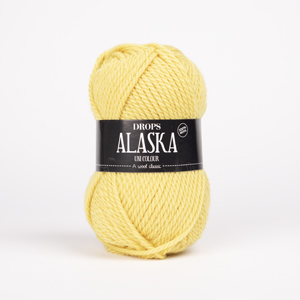













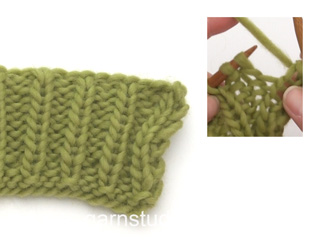



























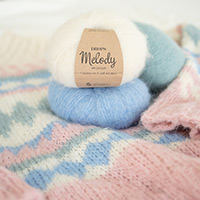
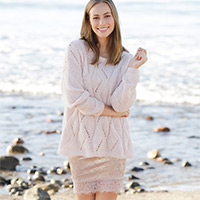

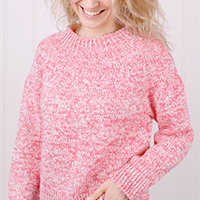

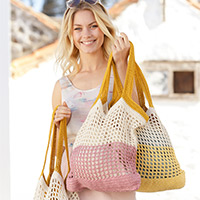
Comments / Questions (91)
O comprato la lana ma lo schema M2 non corrisponde per nulla al modello nella foto. Penso che le indicazioni dei punti si riferiscono al dritto del lavoro e il rovescio va lavorato come i punti si presentano. Altrimenti non è possibile che si lavorino dritto su dritto e rovescio su rovescio se non si fa un ferro sul rovescio seguendo i punti come si presentano. Ma in ogni caso non è assolutamente possible ottenere il motivo nella foto. Dove sta l'incrocio centrale ?
31.10.2015 - 20:33DROPS Design answered:
Buongiorno Chiara. Nei diagrammi trova tutti i ferri del motivo, visti sul diritto del lavoro. I ferri pari sono i ferri di ritorno e lavora le m come si presentano: la m lavorata a dir sul ferro di andata, viene lavorata a rov sul ferro di ritorno. Lavora una volta il diagramma M.1, poi prosegue ripetendo solo il diagramma M.2. Già alla seconda ripetizione di M.2 dovrebbe essere in grado di visualizzare meglio il risultato finale. Buon lavoro!
01.11.2015 - 08:52Der står den er strikke i lysebrun, men den bluse er grå kan i sige hvilken grå den er strikket i
23.10.2015 - 13:23DROPS Design answered:
Hej Susanne. Det er altsaa de farver den er strikket i, men det er nok lyset der aendrer i det. Men du kan lave en lysegraa version hvis du kigger paa farvekortene, f.eks. 04 Alaska med 517 Alpaca. Tag en snak med din garnbutik om den bedste kombi for dig. God fornöjelse.
23.10.2015 - 13:49Nelle descrizioni scrivete taglie 12/14 anni , Ma il maglione è per uomo. Mi confermate che le misure e la quantità di lana richiesta per eseguire il modello corrispondono a taglie per uomo? Grazie
02.10.2015 - 15:54DROPS Design answered:
Buongiorno Chiara. Il maglione viene proposto per la taglia ragazzo età 12/14 anni, e per le taglie uomo: S/M, L, XL, XXL. Quindi p.es per una taglia S/M (uomo), serviranno 750 g di Alaska e 350 g di Alpaca. Nel diagramma in fondo alle spiegazioni trova la corrispondenza delle misure espresse in cm. Il numero tra parentesi è riferito alla taglia ragazzi. Buon lavoro!
02.10.2015 - 18:07Hi,how to read King's cable drops 85-6 pullover pattern 2. M.2 chart on straight needle ???
29.08.2015 - 14:30DROPS Design answered:
Dear Mrs Maple, in the diagram 1 square = 1 st x 1 row, start at the bottom on the right side and read every row from RS from the right towards the left and every row from WS from the left towards the right (cables should be done from RS). Happy knitting!
31.08.2015 - 10:22Hi,the king's cable pullover. The pattern 1,M.1. The last row,row 10 , tell me,knit 1 ,increase right, I want to know, which increase the pattern want me to use?? Increase KFB (knit front back) or increase M1,( make one )????
29.08.2015 - 04:12DROPS Design answered:
Dear Mrs Maple, that's right, you will work into front and back of each st with a dot in the diagram. Happy knitting!
31.08.2015 - 10:14Hi, The King's Cable Drops 85-6 pullover, I knit size XL. And I don't understand pattern 1,M.1. The last row, row 10. The chart tell me to knit 1,inc 1 st by att knit 2 sts in 1 st. Can u please translate for me..can u translate the inc 1 by att knit 2 STS in 1 st . please help,I am new knitter....
29.08.2015 - 04:01DROPS Design answered:
Dear Mrs Maple, on last row in M.1 you have to inc, ie: P1, P next st twice (in front and back loop of st) (= 1 st inc), P1, K1, K next st into front and back loop (= 1 st inc), K1, and so on, ie when there is a dot in the square, work this st into front and back loop (= 1 st inc in this st). Happy knitting!
31.08.2015 - 10:13Guten Tag, ich habe eine Frage zum Abketten des Halsausschnitts: laut Anleitung sollen 14 M gleichmäßig über die mittleren 48 M abgekettet werden. Ich vermute, dass 14 Mal 2M zusammen gestrickt werden, für eine Abnahme von 14 M. Doch wie kann ich dann das Muster entsprechend weiterführen? In der Folgereihe werden dann die 16 mittleren M abgekettet? Oder liege ich völlig falsch? Vielen Dank schon einmal!
08.06.2015 - 17:24DROPS Design answered:
Die 14 M werden an den gleichen Stellen wieder abgenommen, an denen sie zuvor zugenommen wurden, im Diagramm sind das ja die Kästchen mit den Punkten. Dann ketten Sie die mittleren 16 M für den Halsausschnitt ab.
05.07.2015 - 09:19Bräuchte den Pullover in Herrengrösse und nicht in Kindergrösse. Bitte um Maschenzahlen und Garnverbrauch. Danke
22.02.2015 - 17:31DROPS Design answered:
Die Herrengrößen finden Sie auch in der Anleitung, hinter der Angabe in Klammern, die für die Kindergröße steht, sind die Größen S/M-L-XL-XXL angegeben, mit den entsprechenden Mengenangaben unter Material. Die passende Größe entnehmen Sie am besten der Maßskizze am Ende der Anleitung über dem Diagramm, hier können Sie die einzelnen Maße sehen und sich damit für die richtige Größe entscheiden.
22.02.2015 - 21:46Buongiorno, cosa significa l'asterisco e come debbo intendere questa frase: *3 m dir, 3 m rov*, ripetere *-*. Ci sono aumenti da fare nella lavorazione delle coste?
14.02.2015 - 07:11DROPS Design answered:
Buongiorno Simonetta. Quando trova degli asterischi, vuol dire che deve ripetere le istruzioni riportate tra gli asterischi, un certo numero di volte. P.es: se trova: *3 m rov, 3 m dir*, ripetere *-* per un totale di 2 volte, dovrà lavorare in questo modo: 3 m rov, 3 m dir, 3 m rov, 3 m dir. Ci sono degli aumenti solo nell'ultima riga del motivo 1. Buon lavoro!
14.02.2015 - 09:37¿Que quiere decir puntos negros, saltarlos? que se pasan sin tejer?¿pero hay que pasar el punto de una aguja a otra? gracias
27.01.2015 - 01:51DROPS Design answered:
Hola Esperanza, los cuadros negros en realidad no son pts. Están ahí porque mas adelante en ese espacio va a haber pts al hacer aumentos. Pasamos de 34 pts en M.1 a 48 en M.2. Ignóralos.
27.01.2015 - 10:52